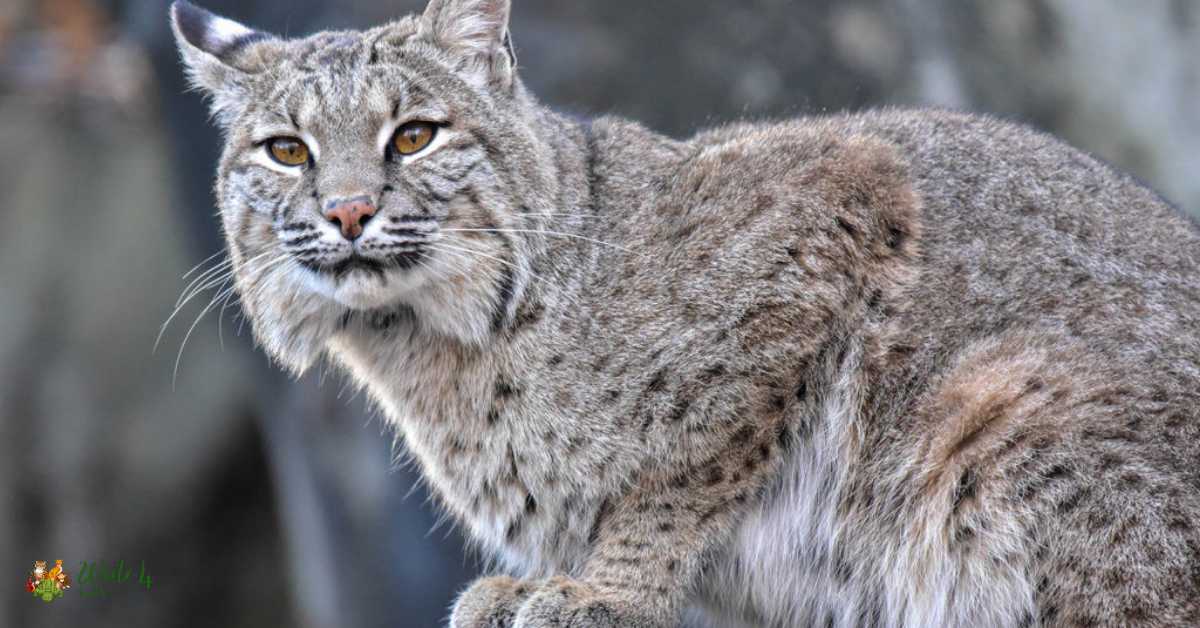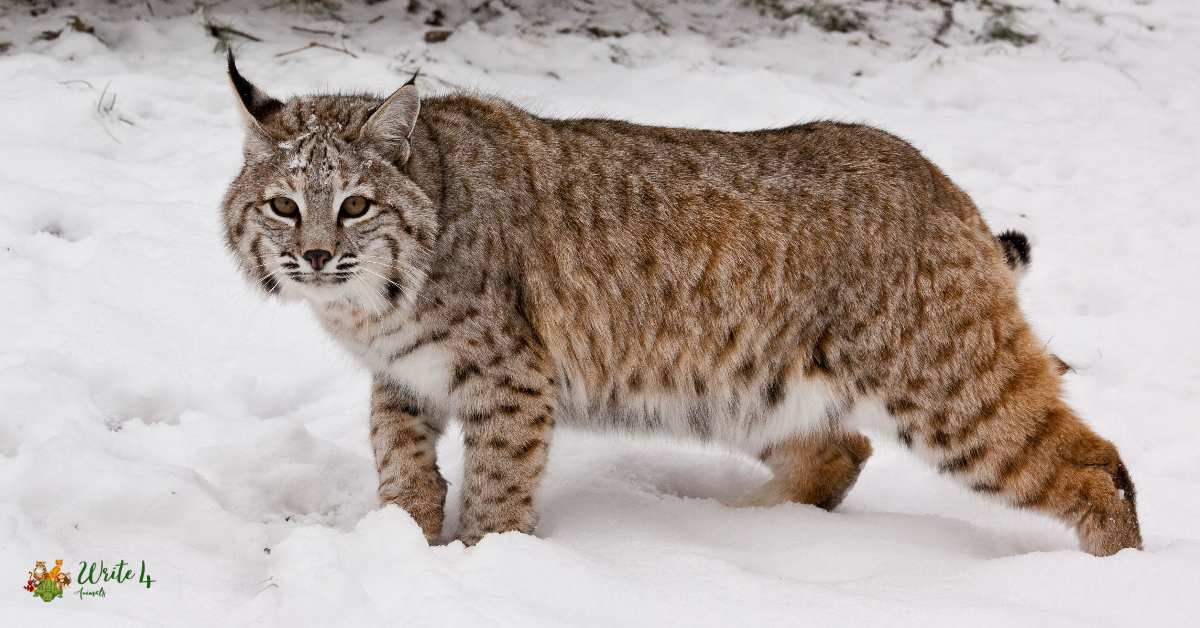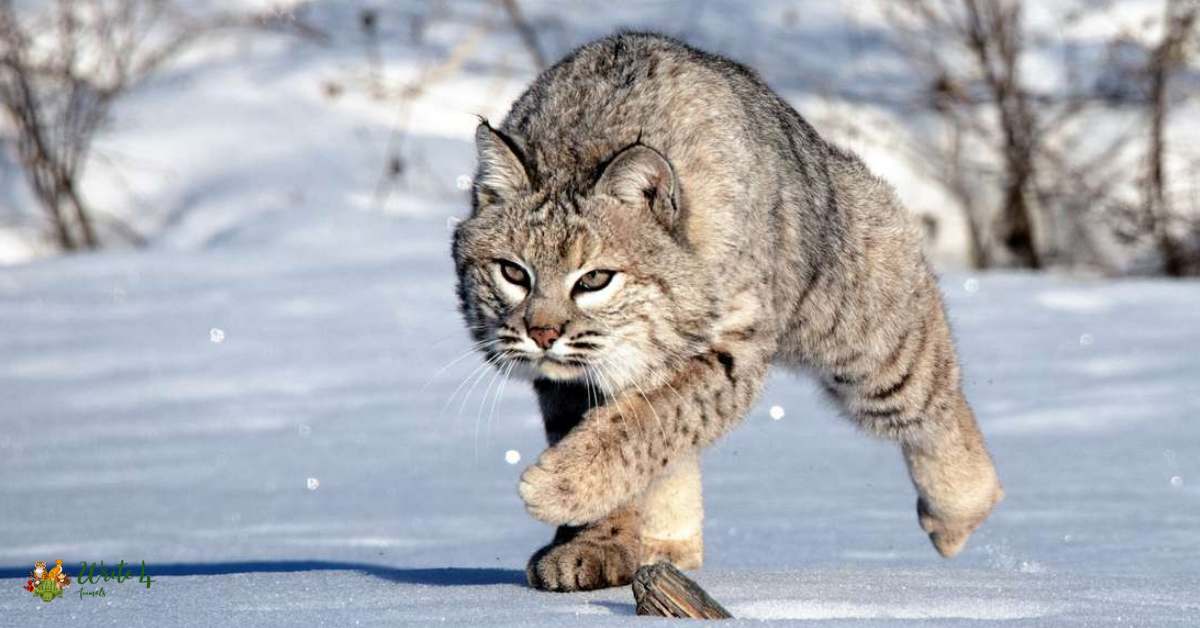Bobcats, the elusive and mysterious wild cats that roam various regions of North America, often evoke curiosity and sometimes fear among those who encounter them or live in their proximity. With their distinctive spotted coats and tufted ears, bobcats possess a captivating beauty that belies their wild nature.
In this blog post, we aim to explore the question that often comes in our mind like Are bobcats dangerous? and will also discuss about their Characteristics,Habitat and more.
Are Bobcats Dangerous?
Bobcats, by nature, are not considered inherently dangerous to humans. These elusive wild cats are known for their shyness and reclusive behavior. Bobcats usually go to great lengths to avoid direct contact with humans and are more likely to retreat than confront.
While they are carnivorous predators with sharp claws and teeth, instances of bobcats posing a threat to human safety are exceedingly rare. Understanding their natural instincts, respecting their territory, and taking appropriate precautions can help minimize any potential risks associated with coexisting with these fascinating creatures.
Bobcats Physical Characteristics
Bobcats are easily recognizable by their distinctive physical features. They typically have a reddish-brown or grayish coat adorned with black spots and stripes.

Their most notable feature is the short, bobbed tail, which varies in length and gives them their name. Additionally, bobcats have tufted ears, giving them an alert and attentive appearance.
Bobcats Habitat and Range
Bobcats have a wide distribution across North America, ranging from southern Canada to Mexico. They are known to inhabit a variety of environments, including mountains, forests, deserts, and even suburban areas.
Their adaptability allows them to thrive in different ecosystems, and they are often elusive, preferring to avoid human contact.
Diet and Hunting Behavior
Bobcats are carnivorous predators with a diet that includes small mammals like rabbits, rodents, and birds. While they are skilled hunters, they are opportunistic feeders and may consume larger prey when available.
Bobcats use their keen senses of sight and hearing to locate and stalk their prey, showcasing their remarkable hunting skills.
Are Bobcats Dangerous to Humans?
Bobcats are generally not dangerous to humans. Their elusive and nocturnal nature reduces the likelihood of direct encounters. If faced with a human, bobcats are more likely to flee than exhibit aggression.

While caution is advised in areas where bobcats are present, it’s important to note that attacks on humans are rare. Instances of aggression are often linked to the animal feeling cornered or provoked.
By maintaining a respectful distance, fostering awareness, and following guidelines for coexistence, the potential for conflict between bobcats and humans can be significantly reduced.
Are Bobcats Dangerous to Dogs?
For pet owners wondering about the safety of their dogs around bobcats, caution is advisable. While bobcats typically avoid confrontations with larger animals, such as dogs, small pets may be at risk.
It is crucial to supervise pets, especially during dawn and dusk when bobcats are most active. Secure enclosures for small pets can prevent potential interactions. Bobcats may see dogs as threats, leading to defensive behavior. Keeping dogs leashed and avoiding areas known for bobcat activity can help mitigate risks.
Responsible pet ownership, awareness of local wildlife, and implementing preventive measures are essential for ensuring the safety of both pets and bobcats in shared habitats.
Are Bobcats Dangerous to House Cats?
While bobcats are wild predators, the danger they pose to house cats depends on various factors. Bobcats are opportunistic feeders, and if small pets are left unattended outdoors, there is a risk of predation.
To mitigate this risk, it’s essential to keep house cats indoors during peak bobcat activity times, especially dawn and dusk.
Additionally, securing outdoor enclosures and removing potential attractants like food can reduce the likelihood of interactions between house cats and bobcats, promoting a safer environment for both.
Frequently Asked Questions
What is a bobcat?
A bobcat (Lynx rufus) is a medium-sized wild cat native to North America. Known for its distinctive appearance, including a short, bobbed tail and tufted ears, the bobcat is a skilled predator with a wide range across various habitats.
What do bobcats eat?
Bobcats are carnivores with a diet that includes small mammals like rabbits, rodents, and birds. They are opportunistic feeders and may consume larger prey when available. Their hunting skills, including stalking and ambushing, contribute to their success as predators.
How can I prevent bobcat encounters near my home?
To reduce the likelihood of bobcat encounters, secure potential attractants like pet food, bird feeders, and garbage. Trim dense vegetation to eliminate hiding spots, and keep small pets indoors during peak bobcat activity times. Educating your community about coexisting responsibly with wildlife can also contribute to prevention.
Are bobcats endangered?
bobcats are not considered endangered. They are listed as a species of least concern by the International Union for Conservation of Nature (IUCN). However, regional populations may face threats due to habitat loss and fragmentation.
What should I do if I encounter a bobcat?
If you encounter a bobcat, remain calm and make yourself appear larger by raising your arms. Back away slowly, avoiding direct eye contact. Do not run, as this might trigger the bobcat’s predatory instincts. In most cases, bobcats will choose to retreat rather than confront humans.
Can bobcats be kept as pets?
Keeping bobcats as pets is not advisable. They are wild animals with specific dietary, behavioral, and space requirements that are challenging to meet in a domestic setting. In many places, it is also illegal to keep bobcats as pets without proper permits.
Do bobcats carry diseases?
Like many wild animals, bobcats can carry diseases such as rabies and feline leukemia. It is essential to avoid direct contact with bobcats and to ensure that pets are up-to-date on vaccinations to reduce the risk of disease transmission.
Recommended
1. what animal eats seaweed | 15 animal that eats seaweed
2. Albino Monkey: History, Facts and More
